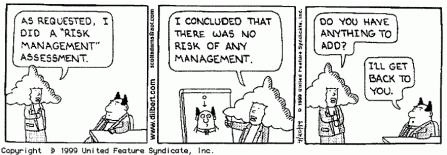Central banks have been the dominant factor in global markets for well over a decade now. It’s important to avoid getting steamrolled by their actions, good or bad. Recognizing what is in your control can help both financially and emotionally when markets become volatile.
“Control your own destiny, or someone else will.”
-Jack Welch
Last week, the Federal Reserve met and cut interest rates by 0.25%. This is exactly what the market was anticipating, but markets sold off when Jerome Powell hinted that the Fed wouldn’t be quite as aggressive with future rate cuts. The market proceeded to fall 3.5% from last Wednesday to Friday.
Then over the weekend, the Chinese central bank devalued its currency relative to the US Dollar. This led to another 3% decline in stocks on Monday. The Dow Jones had its 6th biggest point decline in history.
Why did we see so much volatility over the past week?
Two words: Central Banks.
Central banks have dominated the investment landscape over the past decade. You only need to see one chart to explain everything that has happened in the markets since the global financial crisis.
The chart below, courtesy of Yardeni Research, shows the combined assets of the Federal Reserve, the European Central Bank, and the Bank of Japan, plotted against the S&P 500 index.
You can throw out everything else you hear or read about the markets. THIS is what is driving asset prices. Period.
We are living in an age where central banks are the dominant force in global markets. So much so that across the globe, there is now $15 Trillion worth of bonds that have a NEGATIVE YIELD, as shown the in chart from Bloomberg below.
 This means that people are literally paying to own these bonds. It’s like putting a $100 bill in a safety deposit box, paying the bank $1.00 each year to hold it, and keeping it there for up to 50 years.
This means that people are literally paying to own these bonds. It’s like putting a $100 bill in a safety deposit box, paying the bank $1.00 each year to hold it, and keeping it there for up to 50 years.
This sounds crazy to us. But this is reality. (And has all the ingredients for a major asset bubble, but we’ll save that for another day.)
What do textbooks tell us about this kind of environment? Nothing. This doesn’t exist in textbooks. But we don’t need textbooks to identify the most important theme in today’s investment world: don’t get run over by the steamroller.
You can get run over by not being prepared for volatility. You can also get run over by missing out on a multi-year run in the stock market. In order to not get run over, you must first identify what you can and can’t control.
What CAN we control?
First, let’s recognize that there are varying levels of “control”. If you are selling your home, you can’t control the interest rate environment, or how many people are moving to/from your city. But you can make your house as appealing as possible by doing strategic face-lifts to make it more attractive to a potential buyer.
So let’s identify things in three categories: No Control, Partial Control and Full Control.
Investment-related items where we can exert No Control:
- The Federal Reserve
- Direction of the markets
- When the next recession will occur
- Earnings reports
- Economic data
- Asset class performance
- Interest rates
- Performance of a stock
- Global politics
These are all items that are important in identifying the overall investing environment, but are not things you cannot exert any influence over, at least not directly.
Investment-related items with Partial Control:
- Private investments (board seats, marketing, process controls)
- Real estate (upgrading a property, maximizing rents, landscaping, etc)
- Local politics
These are partially in your control because you can exert effort and capital to potentially alter the outcome in your favor. But you don’t control the broad real estate market, the end user of a company’s goods and services, and what a politician ultimately decides. But you can impact some of the dynamics that could influence your outcome.
Investment-related items with Full Control:
- How much you invest (Asset Allocation)
- What you buy (Asset Selection)
- When you buy (timing of entry)
- What price you pay (determines risk and reward)
- When you sell (timing of exit)
- What price you get when you sell (maximum acceptable loss, profit taking, etc)
Going through this exercise, a funny thing stands out. Most people focus on WHAT THEY CAN’T CONTROL.
Predictions of what earnings will be, where the market will end the year, where interest rates are headed…these are all factors out of people’s control (unless you’re on the Federal Reserve board or the Twitter-in-Chief). There’s no telling much time and effort is spent analyzing things that are at best an educated guess, and ultimately don’t impact the profitability of your portfolio!
Instead, one should focus primarily on what is within your own control. At IronBridge, we spend time developing and improving processes to help identify where our clients should be invested, how much risk to take given our clients’ individual circumstances, and how to tactically gain exposure to areas with higher probabilities of investment success.
By focusing on what you can control, you take two important steps.
First, you realize that you don’t have to be a victim of all the ups and downs of the market.
How many times have you been told to “stay the course”? In a bull market, this advice can pay off and make complete sense. But even in long bull markets, there can be 20% and 30% drops, that ultimately recover but waste the most precious commodity of all…time.
But markets aren’t always in a bull market. There are times when 20, 30 or even 40 years go by with little to no returns. And that’s not factoring in inflation. More often than not, “stay the course” is the response of a financial advisor that has no idea what he or she is doing, and ultimately is not doing any real “management” of a portfolio.
They haven’t focused on the items that are in their control. They haven’t done the work to identify entry and exit prices, or set maximum losses across the portfolio, or have a proven and repeatable process to identify what to own and when.
There is no perfect system, but that’s not the objective. A reliable and repeatable system is the goal.
Second, when you don’t ride every up-and-down in the markets, you realize that you can become more a opportunistic investor.
If you’re not constantly invested at all times, you have dry powder (aka, cash). When you have cash, you can both preserve wealth and be selective when markets get volatile. This is the most common feature of the best investors of all time. Warren Buffet doesn’t stay invested at all times. Jeff Bezos just sold $3B worth of Amazon stock. The best investors on the planet realize what they control, and none of them have a pie chart they stick to through thick and thin.
By taking steps to systematically increase cash in your portfolio, you can then embrace volatility, not be frightened by it. Because now it presents opportunities, not threats. So in the current market environment, more than ever before in history, it becomes about being tactical.
There are areas of the markets, like bonds that we discussed above, that have a very high likelihood of showing negative returns for decades into the future. You don’t have to remain invested there. International stocks is an excellent example of an asset class that has been embraced by most investment advisors, but shouldn’t have been.
Emerging market stocks have been the focal point of both large and small firms over the past decade. We have seen countless portfolios that have anywhere from 10% to 30% exposure to international stocks. An allocation to this area has consistently hurt.
The chart below shows the most common ETF that invests in emerging markets, ticker EEM. Emerging market stocks are currently at the same level they were in 2006.
International stocks will eventually have their day in the sun, but could be especially vulnerable going forward given the heightened state of the trade war between the US and China. Our signals have consistently avoided any exposure to international investments for this very reason.
Bottom line, US Stocks are in year 11 of the bull market. They could easily continue higher for years into the future, but could also see a massive decline similar to that of 2008.
What will happen? Who knows. But as long we focus on what we can control, adapt as circumstances change, and keep strict controls on exposures in portfolios, the odds are in our favor that we can handle whatever the markets throw at us next.
Invest Wisely.
Our clients have unique and meaningful goals.
We help clients achieve those goals through forward-thinking portfolios, principled advice, a deep understanding of financial markets, and an innovative fee structure.
Contact us for a Consultation.
Neither the information provided nor any opinion expressed constitutes a solicitation for the purchase or sale of any security. The investments and investment strategies identified herein may not be suitable for all investors. The appropriateness of a particular investment will depend upon an investor’s individual circumstances and objectives. *The information contained herein has been obtained from sources that are believed to be reliable. However, IronBridge does not independently verify the accuracy of this information and makes no representations as to its accuracy or completeness. Disclaimer This presentation is for informational purposes only. All opinions and estimates constitute our judgment as of the date of this communication and are subject to change without notice. > Neither the information provided nor any opinion expressed constitutes a solicitation for the purchase or sale of any security. The investments and investment strategies identified herein may not be suitable for all investors. The appropriateness of a particular investment will depend upon an investor’s individual circumstances and objectives. *The information contained herein has been obtained from sources that are believed to be reliable. However, IronBridge does not independently verify the accuracy of this information and makes no representations as to its accuracy or completeness.



